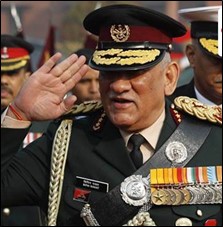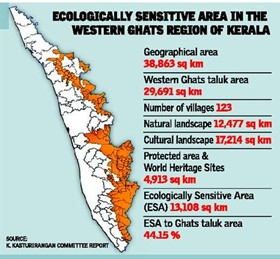Tuesday, 14th December 2021
World Bank report on Learning Loss
In News
A new report prepared by the World Bank in collaboration with UNESCO and UNICEF titled “State of the Global Education Crisis: A Path to Recovery report” discusses how Covid 19 disrupted education globally.
Key Findings of the report
- The crisis exacerbated economic and gender inequalities in education.
- Progress made for children and youth in other domains has stagnated or reversed.
- In low- and middle-income countries, the share of children living in Learning Poverty, already over 50 % before the pandemic, will rise sharply, potentially up to 70 %.
- This generation of students now risks losing 14 percent of today’s global GDP in lifetime earnings in present value as a result of school closures.
- To date, less than 3% of governments’ stimulus packages have been allocated to education and much more funding will be needed for immediate learning recovery.
- The digital divide became glaringly evident, with millions of children left behind during the shift to remote learning.
- The youngest learners faced a double disadvantage, often left out of remote learning and school reopening plans.
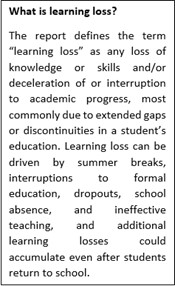
Solutions Suggested
- Building on the close collaboration of UNESCO, UNICEF, and the World Bank under the Mission: Recovering Education that focused on three priorities:
- bringing all children back to schools,
- recovering learning losses, and
- preparing and supporting teachers.
- Reopening schools should be countries’ highest priority.
- To tackle the learning crisis, countries must first address the learning data crisis, by assessing students’ learning levels.
- To prevent learning losses from accumulating once children are back in school, countries should adopt learning recovery programs consisting of evidence-based strategies
- Beyond addressing learning losses, addressing children's socio-emotional losses is essential.
- Building back better requires countries to measure how effective their policy responses are at mitigating learning loss and to analyze their impact on equity—and then to use what they learn to keep improving.
- Countries have an opportunity to accelerate learning and make schools more efficient, equitable, and resilient by building on investments made and lessons learned during the crisis.
Conclusion
- The COVID-19 school closures, compounded by the economic and health impacts of the pandemic, have had major negative impacts on children’s learning, wellbeing, and their expected future livelihoods.
- As schools reopen, it would be wrong to resume business as usual, on the assumption that once children are back in classrooms their learning will soon get back on track.
- Beyond the immediate recovery, much more needs to be done to reimagine education.
Sources:
Platform companies and gig workers
In New
A debate has begun between platform companies and gig workers in multiple countries to classify the gig workforce as ‘employees’ in order to get social security coverages and incentives equivalent to regular workers.
About the News
- Recently, even the Supreme Court of India sought responses from the Centre and firms including Uber and Zomato on a plea of an organisation of transport workers serving app-based service providers seeking social security rights available for unorganised sector workers under the law.
- The plea by Indian Federation of App-Based Transport Workers (IFAT) has sought formulation of welfare schemes like health insurance, maternity benefits, pension, old age assistance, disability allowance and completion of vaccination at aggregators’ cost on priority basis for gig workers.
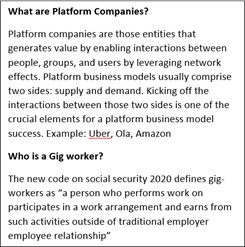
What are the major issues of Contention between Platform Companies and Gig-workers?
- Frequent and random changes to the commission structure
- Delays in payments
- Deliberate miscommunication of earnings potential to attract gig workers
- Lack of access to basic amenities.
- Lack of bargaining power to both users and the gig-workers.
- Threat by companies of job cutting on the name of optimizing operating cost.
Major issues with present model
In the present Incentive-based model
- Remuneration is promised on a target and incentive model.
- Incentives work up to a third of a worker’s daily earnings.
- Strict log-in times are stipulated to be eligible for incentives. Despite claims of flexibility, workers end up working long hours to gain incentives and make the gig job viable.
- Workers on these platforms have little control over when orders are allocated.
- Stringent conditions on cancellations also mean the partners have limited ability to deny work.
What can be done?
- Including Gig-workers in the definition of the Industrial Relations Code (2020) will help them with uniform place in matters of collective bargaining, and fair hiring and firing procedures.
- The Occupational Health, Safety and Working Conditions Code (2020) makes no mention of gig workers. This is troubling, especially in the context of many gig workers putting themselves at risk during the pandemic and continuing to work during lockdowns.
- Including them under the ambit of The Code on Wages (2019) thus giving them the right to a minimum wage.
- UK model for Platform Companies can be studies for India.

Sources:
Covid-19 booster vaccines
In News
The Union Health Ministry has recently stated that India is still examining the possibility of administering the Covid-19 Booster dose
About the News
- Medical Experts are of the opinion that boosters will be required for continuing protection from Covid, while stressing that second-dose coverage is of high priority.
- Also, some have suggested the simultaneous increase in coverage and offering targeted boosters to vulnerable sections.
Understanding ‘booster’ dose and its Effectiveness
- What is it? A booster is an additional shot given after the protection provided by the original shot(s) has begun to decrease over time, so that people can maintain their level of immunity for longer.
- Various studies have shown a significant drop in antibodies against Covid-19 within four months after complete vaccination and also that at six months there is a decline in antibody levels by more than 80%.
- Under what other circumstances can administering a booster be considered? If community transmission is high, boosters would help in controlling viral spread. For instance, daily case counts in Israel have remained low after booster coverage increased.
- Ahead of that, vaccination of the entire eligible population with the recommended number of doses must be done.
- Effect of a booster dose: BioNTech and Pfizer have noted that a three-shot course was able to neutralise the Omicron variant as the third dose increased neutralising antibodies by a factor of 25.
- India’s policy on booster doses: The administration of booster shots is under consideration in India with clear priority focus on complete primary vaccination as Omricon appears to spread very easily in the unvaccinated population.
- India’s Capacity: Biological E’s Corbevax and SII’s Covovax — both of which are protein-based vaccines — are India’s best bet for a booster shot. Protein vaccines can be produced in very large amounts and are perfect for booster doses. In people who got Covishield, for instance, a protein vaccine will selectively boost just the spike response.
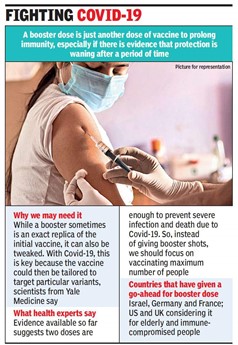
What are the Concerns related to Booster Dose?
- There are concerns related to clinical concerns that is about efficacy and also ethical ones. Several developed nations are now administering booster doses in the face of rising omicron cases. Others though are still struggling to vaccinate their population with the first two.
- India falls somewhere in between, at just 37 per cent people who have received two doses of the COVID-19 vaccine.
- Allowing boosters means that we are taking those doses away from people who only have one dose or none.
Source:
- Explained: To roll out Covid-19 booster vaccines, or not to
- Explained: Where does India stand on COVID-19 booster shots and what do experts have to say
- What makes boosters more effective than the two covid jabs?
Image Source:
First person at South Pole
On 14th December 1911, Norwegian explorer Roald Amundsen, became the first person to reach the South Pole. The expedition led by the Amundsen succeeded first. He and four others arrived at the pole on 14 December 1911. Captain Scott reached the South Pole 33 days later. The United States' scientific base at the South Pole, founded in 1957, is named the Amundsen–Scott South Pole Station, to honour the memories of both polar pioneers. The South Pole is the southernmost point on the Earth. It is the precise point of the southern intersection of the Earth's axis and the Earth's surface. Although land at the South Pole is only about a hundred meters above sea level, the ice sheet above it is roughly 2,700 meters (9,000 feet) thick. This elevation makes the South Pole much colder than the North Pole, which sits in the middle of the Arctic Ocean. In fact, the warmest temperature ever recorded at the South Pole was a freezing -12.3 degrees Celsius.

Source:
2021 Global Health Security Index
In News
The 2021 Global Health Security Index was recently released by the Nuclear Threat Initiative (NTI) and the Johns Hopkins Centre for Health Security.
What is the Global Health Security Index?
- The Global Health Security (GHS) Index is the first comprehensive assessment and benchmarking of health security and related capabilities across the 195 countries that make up the States Parties to the International Health Regulations.
- The GHS Index was first launched in October 2019. The GHS Index framework includes consideration of countries’ readiness for Global Catastrophic Biological Risks (GCBRs) to measure national capacity to prevent, detect, and respond to high-consequence biological events before they become catastrophic.
- GCBRs refer to biological risks of unprecedented scale, with devastating outcomes that are orders of magnitude greater than what the world has witnessed with the COVID-19 pandemic. Such events could cause such significant and irreparable damage to human civilization that they undermine its long-term potential.
What is Public Health Security?
Global health security is defined as the activities required, both proactive and reactive, to minimize the danger and impact of acute public health events that endanger people’s health across geographical regions and international boundaries.
Challenges to Global Health Security
- New Diseases: Population growth, rapid urbanization, environmental degradation, and the misuse of antimicrobials are disrupting the equilibrium of the microbial world leading to new diseases like Covid-19.
- As the world’s population becomes more mobile and increases its economic interdependence, these global health threat increase.
- The Sovereignty Challenge: Although infectious diseases transcend borders, requiring international cooperation and collective action, states assert national sovereignty as a justification for flaunting international norms.
- The Challenge of International Cooperation: The international landscape is diverse and complex, with more than 175 initiatives, funds, agencies, and donors. Coordination is vital in health emergencies to ensure that all actors understand their roles and work cooperatively.
- The “Good Governance” Challenge: Many low- and middle-income states similarly exhibit major governance deficits. Often, their decisions are closed to public scrutiny, they shun or even punish civil society organizations, and resist accountability mechanisms.
Status of Global Health Security
The GHS Index includes six categories, each covering a range of indicators and questions. Results at this level provide insights into the overall finding:
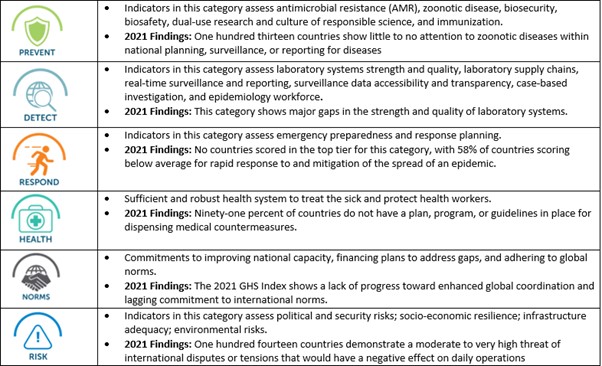
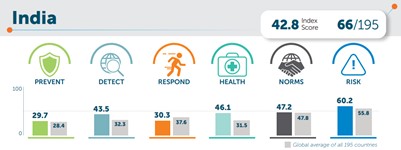
Overall Findings of the Index
- Although many countries were able to quickly develop capacities to address COVID-19, all countries remain dangerously unprepared for meeting future epidemic and pandemic threats.
- Most countries, including high-income nations, have not made dedicated financial investments in strengthening epidemic or pandemic preparedness.
- Most countries saw little or no improvement in maintaining a robust, capable, and accessible health system for outbreak detection and response.
- Political and security risks have increased in nearly all countries. Trust in government, which has been a key factor associated with success in countries’ responses to COVID-19, is low and decreasing.
- Countries are continuing to neglect the preparedness needs of vulnerable populations, exacerbating the impact of health security emergencies.
- Countries are not prepared to prevent globally catastrophic biological events that could cause damage on a larger scale than COVID-19.
Recommendations to Strengthen Global Health Security
Given what has been learned from the COVID-19 pandemic thus far, the following recommended actions for countries, international organizations, the private sector, and philanthropies and funders would strengthen the global and national preparedness for the next pandemic.

Conclusion: COVID-19 can be characterised as a global health crisis leaving multidimensional implications on all facets of life like health, economy, education etc. for the entire globe. Health security will be one of the central themes in the creation of a national security framework in many countries going forward. The world needs a new international system for pandemic preparedness and response and it needs one fast to stop future infectious disease outbreaks from becoming catastrophic pandemics. The world must learn from this crisis and plan for the next one without losing precious time and momentum.
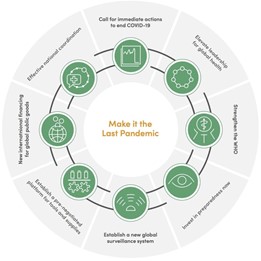
Question: Discuss the problems associated with the global health Security. What can the steps taken to resolve these issues?
Sources:
Leak in Black Hole
This is simulated image of the leak in a blackhole. NASA research team has said that the supermassive black hole at the centre of our galaxy, the Milky Way, has a “leak.” Earlier, scientists had assumed that the supermassive black hole might be a sleeping giant. NASA says the black hole called Sagittarius A* looks like it still has the remnants of a “blowtorch-like jet dating back several thousand years.” Black holes, generally, draw some material into a swirling, orbiting accretion disk where some of the falling material is swept up into outflowing jets that are collected by the black hole's powerful magnetic fields. The first evidence of such jet spurting from the black hole was observed in 2013 by the Chandra X-ray Observatory followed by radio waves detected by the Jansky Very Large Array telescope in Socorro. The Chandra, which is named after Nobel prize winner Subrahmanyan Chandrasekhar, orbits up to 200 times higher above Earth than the Hubble Telescope.

Source:
E-Sawari India E-Bus Coalition
- Context: NITI Aayog has recently announced the launch of 'e-Sawaari India Electric Bus Coalition' in partnership with Convergence Energy Service Ltd (CESL) and World Resources Institute.
- The e-Sawaari India Electric Bus Coalition is an initiative towards ensuring steady and paced electrification of the bus transport system in India.
- It aims to share knowledge and learnings on e-bus adoption in India among various stakeholders, including central and state governments, city-level government agencies, transit service providers, original equipment manufacturers (OEMs), financing institutions and ancillary service providers.
- It aggregates e-bus demand from the nine largest Indian cities - under the ambit of the Faster Adoption and Manufacturing of Electric Vehicles in India (FAME) scheme, Phase – II.
- Electrification of public transport especially in the bus sector is key to India's decarbonisation strategy and is crucial to achieve net zero emissions.
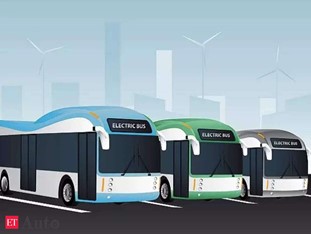
Source:
- NITI Aayog launches 'e-Sawari India E-Bus Coalition' in tie-up with CESL
- NITI Aayog Launches E-Sawaari – India’s First Electric Bus Coalition
Image Source:
Royal Gold Medal
- Context: Balkrishna Doshi has been honoured with the Royal Gold Medal 2022.
- Given in recognition of a lifetime’s work, the Royal Gold Medal is approved by the Queen of the UK and is given to a person or group of people who have had a significant influence on the advancement of architecture.
- Balkrishna Doshi has influenced the direction of architecture in India and its adjacent regions through both his practice and his teaching.
- His buildings combine pioneering modernism with vernacular, informed by a deep appreciation of the traditions of India’s architecture, climate, local culture and craft.
- His projects include administrative and cultural facilities, housing developments and residential buildings and is known for his visionary urban planning and social housing projects.
- Doshi’s key projects include:
- Shreyas Comprehensive School Campus (1958-63), Ahmedabad
- Atira Guest House (1958), Ahmedabad
- The Institute of Indology (1962)
- Tagore Hall & Memorial Theatre (1967), Ahmedabad
- Indian Institute of Management in Bangalore
- Aranya Low Cost Housing (1989), Indore, which won the Aga Khan Award for Architecture in 1995 etc.

Source:
- Balkrishna Doshi honoured with the Royal Gold Medal 2022, the world’s highest honour for architecture
- Royal Gold Medal 2022 recipient: Balkrishna Doshi
Image Source:
UPI for feature phone users
- Context: The RBI is set to bring more users under the ambit of unified payments interface (UPI) channel, opening it up for feature phone users.
- Feature phones are basic phones, which typically provide voice calling and text messaging functionalities.
- India has about 1/3rd the total mobile phone consumer base as feature phone users.
- Feature phone users have limited access to innovative payment products like UPI, a real-time payment system developed by the National Payment Corporation of India (NPCI) for inter-bank transactions.
- Therefore, the current move will increase digital penetration of financial services and help a large segment of people without access to smartphones or reliable internet services to transact digitally.

Source:
Image Source:
AESA radar
- Context: India has recently developed AESA radar to make IAF fighters more lethal.
- Active Electronically Scanned Array (AESA) radar is an indigenously developed radar which is 95% indigenous, with only one imported subsystem.
- It has the capacity to track 50 targets in the sky at a range in excess of 100km and engage four of them simultaneously.
- The AESA radar will be mounted on the radar cone of Su-30 MKI aircraft as well as carrier-based MiG-29 K fighters of the Indian military.
- Earlier, India was using primary radars on its fighters as well as indigenous airborne warning and control systems planes.
- The AESA radar is also the key to the DRDO-developed Astra air-to-air missile, which has a range well over 120km, and will deliver guided ammunition over long distances.
- This radar will nullify the air superiority China had gained with its J20 multi-role fighters, as the Indian-developed AESA radar compares well with that developed by Beijing.

Source:
- India develops AESA radar to make IAF fighters more lethal
- INDIA DEVELOPS AESA RADAR TO MAKE IAF FIGHTERS MORE LETHAL
Image Source:
India and Russia need each other: HT
Essence: With the meeting of premiers lately, the editorial provides an insight into evolving India-Russia relationship. There are important conclusions to draw from the meeting held- firstly, India and Russia maintain time-tested ties despite the perception that they are moving closer to their antithetic partner, ie USA on one hand and Pakistan and China on the other. Next, strategic and defense cooperation needs the crucial support of economic foundation as well. Eg. Boosting energy capacity, technology, banking, etc. Thirdly, Russia will attempt to localize production in India. Eg AK rifles and frigates. Lastly, there will be attempts to converge on regional issues like Afghanistan peace process and centrality of ASEAN in Asia-Pacific participation. Maintaining synchrony in growth will lead to further close ties between both the nations.
Why you should read this article?
- To understand the important means through which India and Russia will carve their future relationship.
- To understand the geo-politics around India-Russia ties.
- To understand the variety of converging dimensions of the two nations.
Source:
The looming crisis in State finances: HBL
Essence: The article highlights the problem of fiscal crisis faced by the States. Though the problem got aggravated with pandemic in the economy, it already existed even before the pre covid times. The reason being fall in receipts by the state government owing to various reasons. As recovering from pandemic will require more spending, enhancing spending through deficit financing may not be a good option.
As the increased spending to cope up with pandemic would lead to increase in state’s debt burden along with higher servicing costs, special allocations should be made to address such issues. If not done then states would have to trim their spending on welfare expenditure which could have adverse consequences for the most vulnerable section of population.
Why you should read this article?
- To understand the trends in state finances.
- To understand the reason in the fall of revenue receipts of state government.
- To understand how the pandemic further aggravated the fiscal position of the government.
Source:
The rise of the platform economy and access to educational resources: ORF
Essence: Even though Indian educational institutes are returning to conventional teaching methods, research shows that the usage of digital platforms to access learning materials is now irreversible. The article discussed two sorts of educational platforms: open and closed, and how the pandemic in India has sparked demand for educational resources across both types of platforms. We must maintain publishers' rights and incentives in addition to enabling a larger reach of high-quality educational resources. To do this, we must strike a delicate balance between open and controlled access in order to address the issue of intellectual property, particularly copyright. The article goes on to recommend four other techniques, each of which has its own set of problems. Through initiatives such as digital platforms and ICT-based education, the National Educational Policy (NEP) 2020 repositions education for the India of the future. To preserve a perfect balance of education, we must ensure that learners worldwide have access to the educational resources they require, and that the publishers who create them are rewarded.
Why should you read this article?
- To comprehend the relevance of the platform economy and how digital platform learning has become irreversible.
- To understand why is it vital to strike a balance between open and closed educational platforms?
- To figure out what approach we should take to deal with the problem.
Source:
The Status of Polio-free Nation Background
- India’s story of achieving Polio-free status has been many ups and downs.
- Anuradha Gupta, an IAS Officer from 1981 batch, made the drive for Polio free India her mission.

The Journey to Polio-free Nation
- Anuradha Gupta after taking charge as the additional secretary in the Ministry of Health and Family Welfare, and director of India’s National Health Mission, started understanding the ground reality of the polio vaccine drive in India.
- She realized that the way to tackle the nation’s polio crisis was through inclusiveness. This approach aimed at looking for children left out of immunization drive, rather than looking at how many children were being covered in every round of immunization.
- Her work focused on more targets that needed to be met rather than having a macro-statistics approach, which masks the realities of the neglected population.
- Controversies made round when she tried to change the procurement procedure of the vaccine, but with grit and determination she moved ahead.
- Rapid vaccination drives were initiated to achieve the status and there lied the great success for the nation as we were declared Polio Free.
Quote:
“Sometimes we sit around waiting for a change from someone or a situation but sometimes you just need to change your direction and approach.” ― Hopal Green.
Source:
Share the article
Get Latest Updates on Offers, Event dates, and free Mentorship sessions.

Get in touch with our Expert Academic Counsellors 👋
FAQs
UPSC Daily Current Affairs focuses on learning current events on a daily basis. An aspirant needs to study regular and updated information about current events, news, and relevant topics that are important for UPSC aspirants. It covers national and international affairs, government policies, socio-economic issues, science and technology advancements, and more.
UPSC Daily Current Affairs provides aspirants with a concise and comprehensive overview of the latest happenings and developments across various fields. It helps aspirants stay updated with current affairs and provides them with valuable insights and analysis, which are essential for answering questions in the UPSC examinations. It enhances their knowledge, analytical skills, and ability to connect current affairs with the UPSC syllabus.
UPSC Daily Current Affairs covers a wide range of topics, including politics, economics, science and technology, environment, social issues, governance, international relations, and more. It offers news summaries, in-depth analyses, editorials, opinion pieces, and relevant study materials. It also provides practice questions and quizzes to help aspirants test their understanding of current affairs.
Edukemy's UPSC Daily Current Affairs can be accessed through:
- UPSC Daily Current Affairs can be accessed through Current Affairs tab at the top of the Main Page of Edukemy.
- Edukemy Mobile app: The Daily Current Affairs can also be access through Edukemy Mobile App.
- Social media: Follow Edukemy’s official social media accounts or pages that provide UPSC Daily Current Affairs updates, including Facebook, Twitter, or Telegram channels.



